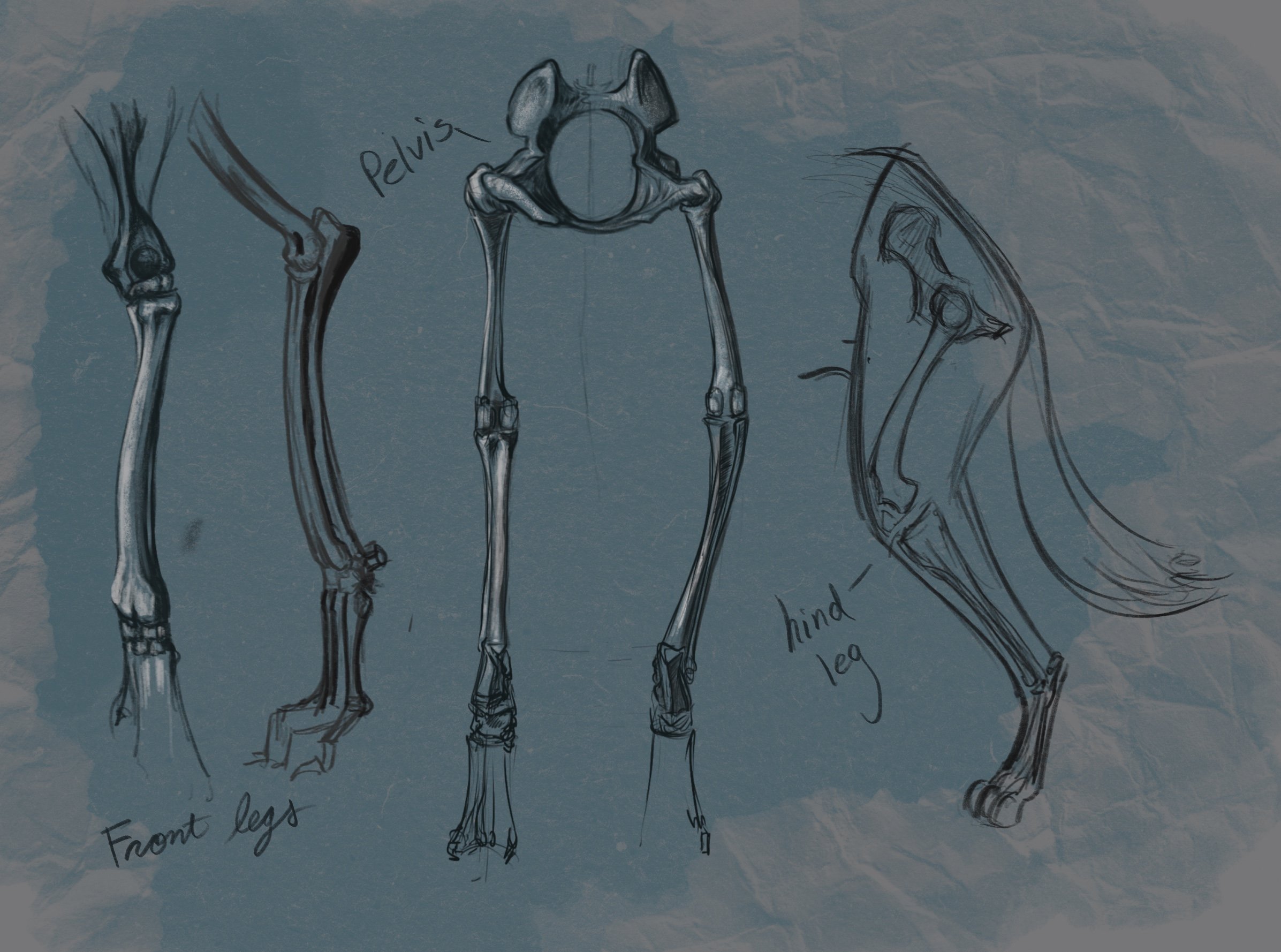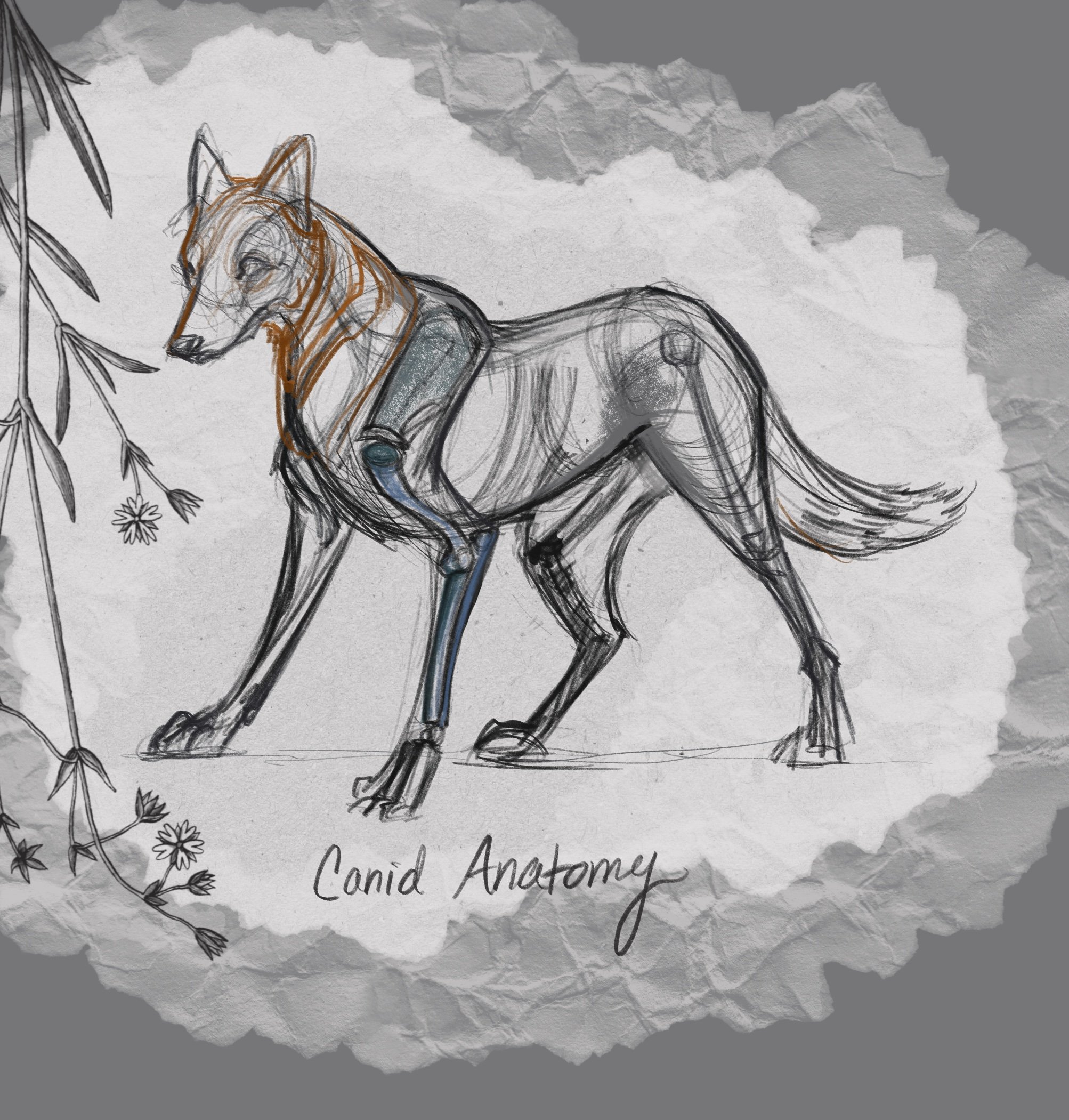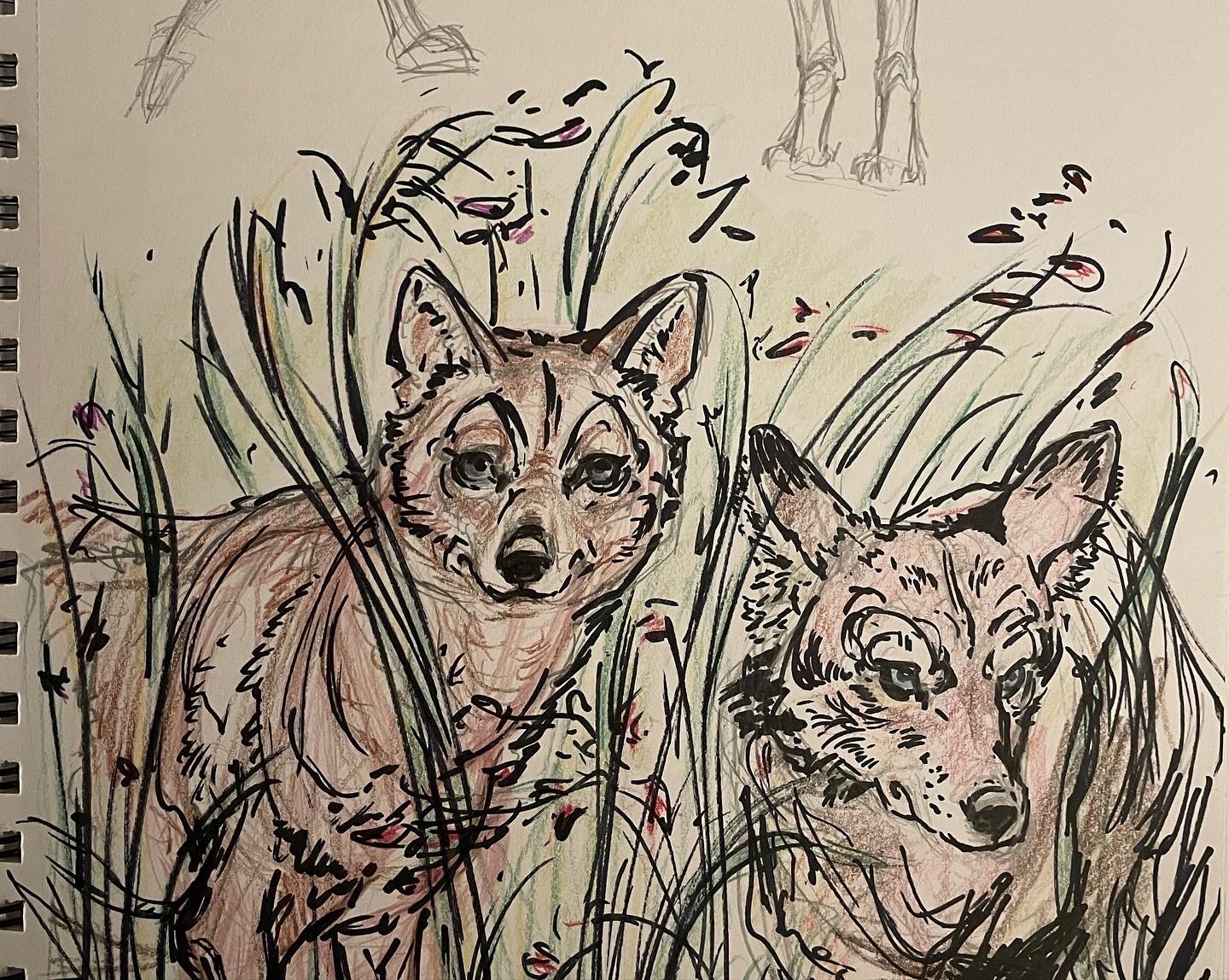Storytelling Collaboration With The Red Wolf Project & Wolf Conservation Center
This collaborative project consists of an anthology series about wolves and another project consisting of a virtual reality gaming application. This page serves as a blog which shows the process of creating the narrative project.
To learn more about the virtual reality gaming application, visit this link: Wolf Tracker VR. This link will bring you to a PDF of our team’s high-level explanation of the game and where we currently are in the production. The Wolf Conservation Center has been supportive in working with us to visualize their research.
Research & Collaboration
Research Stage
As the story artist and illustration lead on this collaboration, one of my responsibilities is to participate in the historical research of the wolf in America and as an archetype in literature.
Anatomy Studies
In addition to gathering research to craft the narrative, I have had to study the anatomy of the wolf and other wild canids, so I may illustrate expressive poses for the wolf characters throughout the story. The photography of wildlife conservationist and researcher, Amy Shutt (of The Canid Project & The Red Wolf Project)has been paramount in these anatomy studies.





Concept and Visual Development Work : Works In Progress
The images below include my initial visual development work for the multimedia story collaboration with The Red Wolf Project and The Wolf Conservation Center. Currently we are in the stages of establishing the overall look and feel of the narrative as well as defining the style of the wolf and human characters. At this point, we are moving towards a loose watercolor and ink style, that lends itself to a fairytale type of personality. This style fits the purpose and intent of the project, as we are reframing the character archetype of the wolf in literature and fairy tales.
Story 1 of Anthology Series: Summary
The first of the anthology series is a short story that takes place in the middle colonies region, specifically northern New Jersey. New Jersey was one of the first settlements with Newark being founded by the Puritans in 1666. The arrival of the first European settlers marked the beginning of the extermination of the wolf in the north east. This story follows a young Irish immigrant girl who has just moved to the New World and is horrified by the violence she witnesses towards the wolf. It is a historical fiction tale that combines Celtic mythology with American history.
The superstitions and violent practices witnessed by the little girl in this story, are taken from real events that took place during the Colonial era. It was normal to not just fear, but hate the wolf, who was often used in sermons by Puritanical priests, to symbolize the devil. Wolf hunting parties often took place in the forests around the villages. The outside walls of the churches were decorated with severed wolf heads from these hunts. The witch hunts did not stop at human beings but spilled over to the wolf, who was mythologized in a demonic light. This has carried on through the centuries, into the present day. Through storytelling, we hope to educate the public about where these fears about the wolf came from and hopefully kill those false superstitions at the root, spanning all the way back to the 16th century.
Visualizing the Script: My Process
My process when developing a visual narrative begins with paper and pencil. I start roughing out small thumbnail storyboards that illustrate the flow of the story document and experiment with the visual pacing.
Initial Planning Stage
This stage is entirely centered around illustrating each line of the manuscript, then finding the proper way to visualize the pacing.
Cutting and Pasting
To do this experiment with the order of events, I cut out thumbnail panels as I draw them and move them around within the storyboard flow. This helps me establish the flow of events and helps me to set the narrative rhythm of the story.
The Digital Phase
After the rough paper thumbnailing stage, I scan in the final thumbnail storyboards via my iPad Pro. I will bring these scans into Photoshop or Procreate where I will begin the next stage of refinement. My digital thumbnail storyboards are the jumping off point for the initial page layout sketches. I use a template for standard comic layout dimensions, to ensure the artwork is designed for the space correctly.





















